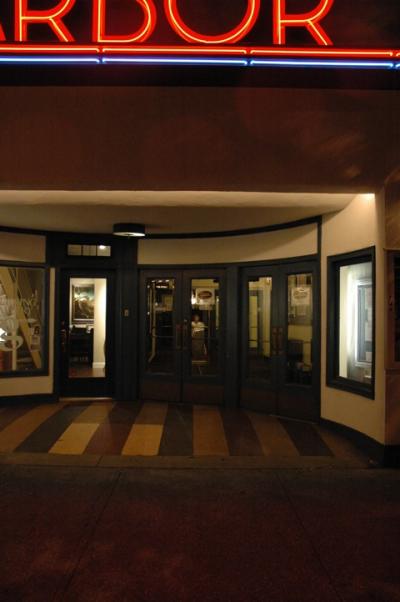Relay: A Window Onto the Sag Harbor Cinema

My first home of my own after college was an apartment on Sag Harbor’s Main Street, just south of the Sag Harbor Cinema. I lived there for six years in my 20s, watching the village’s daily life unfold through the front windows.
On Memorial Day, the Sag Harbor Community Band would begin tuning up well before 9, tucked in the semicircular alcove in front of the Art Deco cinema. In the mid-’90s, on warm summer nights, kids would loop through the village from one end to the other, showing off their jacked-up trucks and people-watching as they drove. It was a thing, then. Maybe it still is.
When I first moved in, Sag Harbor was still rebuilding from the 1994 Easter Sunday fire that destroyed the Emporium Hardware building. Before the new building rose in its place, I remember a view of the water from the roof behind our apartment, but could that really be?
It was the perfect place to live at that time in my life, and I shared it with a rotating collection of friends who signed on as roommates for a few months at a time or just crashed on the couch for a weekend or so.
After reading about the fire two weeks ago that destroyed the cinema among other neighboring buildings, my friend Carl, one of the many who laid claim to the second bedroom, described the apartment as “a kind of miniature commune.” And it was, in its way. It just lent itself to a good time. We were one big, happy family and did not yet need to answer any of life’s bigger questions. We danced and made movies and played charades and cooked huge communal meals together. Friendships were made and relationships fell apart, and I was one of the people at the swirling center before so many of us drifted off in our separate directions.
Because the cinema was so iconic and appeared in so many paintings and photographs, our apartment next door often played a supporting role. We’d notice our lamp, the silhouette of our potted plant, in, say, a painting on the cover of Dan’s Papers. It was about the theater, but among those of us who knew 90 Main Street, it was our few minutes of fame, too.
It was a shotgun apartment that ran the full depth of the building, with a big living room in front, a spacious eat-in kitchen in the middle, and two bedrooms at the back with windows onto an unheated sunroom. What passed for the master bedroom also served as the gateway to the sunroom, the roof beyond, and the fire escape out back. From the kitchen and bedroom windows, we could see over the roof of the cinema lobby, and from the front windows we could see the nighttime glow of the cinema’s neon “Sag Harbor” sign gently illuminating the sidewalk below.
You could ride out on the Jitney, get off at the movie theater, and walk right upstairs. Out the front door, you could get everything you needed and go barhopping, too, without ever getting in your car. And if you weren’t in the mood to talk, it was best go out through the backdoor; it was impossible not to run into a friend or acquaintance looking for a chat.
Main Street was my front yard, and its pulse beat inside of me for those years and quite a few after that.
Now my old apartment is just a shell of itself, sky visible through the burned-out roof, and the cinema and the building to the right of it have been torn down completely. All of us who love the village feel the hole not just in the streetscape but inside of us. I don’t think it’s an exaggeration to say that Sag Harbor without that cinema facade is like East Hampton without the Hook Mill. God forbid the mill ever burned, there is no doubt we would rebuild.
Carissa Katz is The Star’s managing editor.
